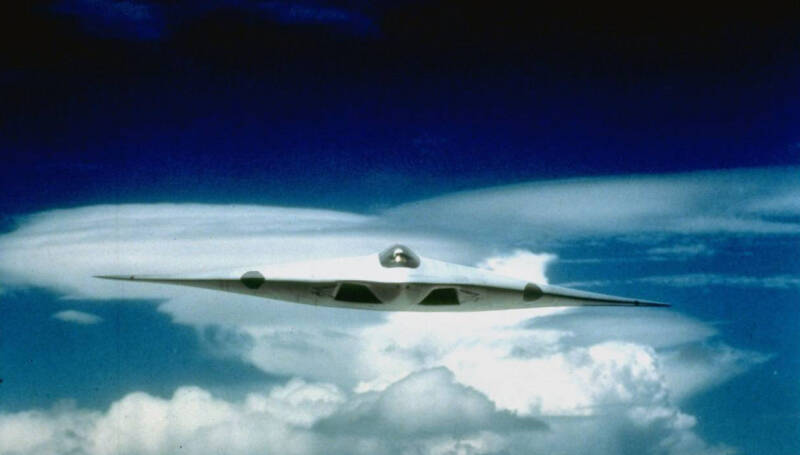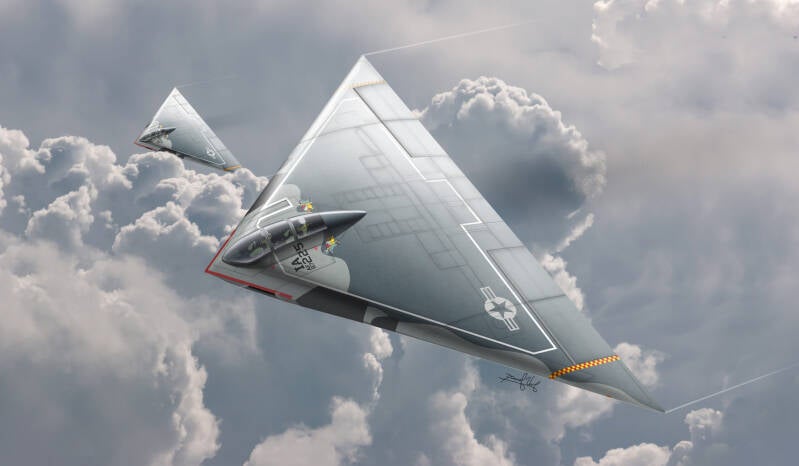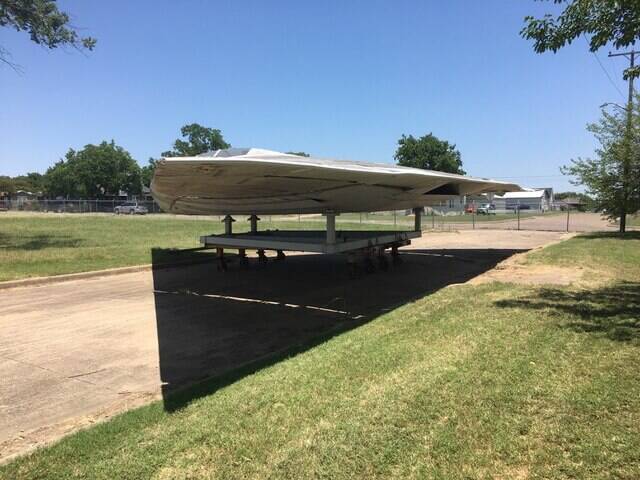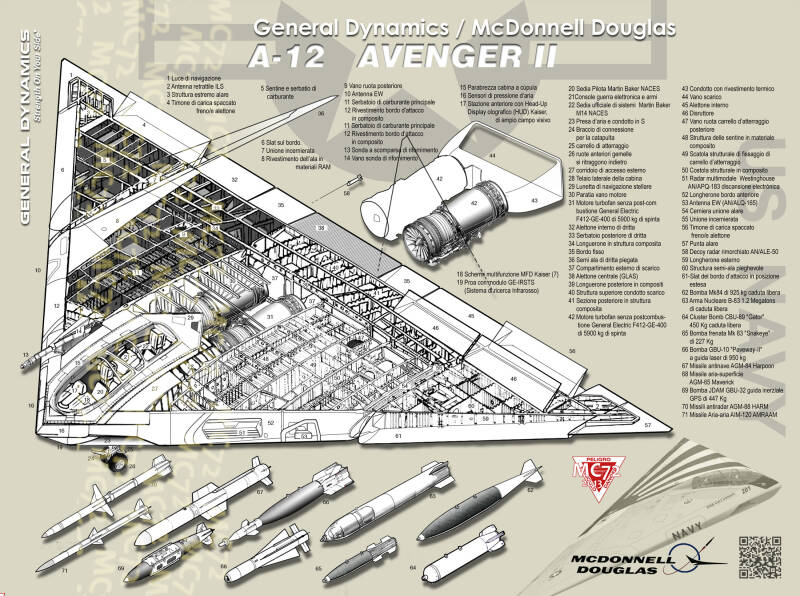McDonnell Douglas/General Dynamics A-12A Avenger II

Country of Origin: United States of America
Branch of Service: United States Navy
Manufacturer: McDonnell Douglas/General Dynamics
Type: Carrier-Based Stealth Attack Aircraft
Original Program: Advanced Tactical Aircraft [ATA] (1983)
In Service: 1992 (planned); Canceled 1991
The A-12 Avenger II was a proposed American attack aircraft from McDonnell Douglas and General Dynamics. It was to be an all-weather, carrier-based stealth attack plane that was to be a replacement for the Grumman A-6 Intruder in the United States Navy and Marine Corps. Its Avenger II name was taken from the Grumman TBF Avenger of World War II. The development of the A-12 was troubled by cost overruns and several delays, causing questions of the program's ability to deliver upon its objectives; these doubts led to the development program being canceled in 1991. The manner of its cancellation was contested through litigation until a settlement was reached in January 2014.
The United States Navy began the Advanced Tactical Aircraft (ATA) program in 1983. The program was to develop and field a replacement for the A-6 Intruder by 1994. Stealth technology developed for the United States Air Force would be used heavily in the program. Concept design contracts were awarded to the industry teams of McDonnell Douglas/General Dynamics, and Northrop/Grumman/Vought in November 1984. The teams were awarded contracts for further concept development in 1986.
The Navy initially sought to buy 620 A-12's and Marines wanted 238. In addition, the Air Force briefly considered ordering some 400 of an A-12 derivative. The A-12 was promoted as a possible replacement for the Air Force's General Dynamics F-111 Aardvark, and for the United Kingdom's Panavia Tornado IDS fighter-bombers. The craft was a flying wing design in the shape of an isosceles triangle, with the cockpit situated near the apex of the triangle. As a result, the A-12 gained the nickname "Flying Dorito".
The aircraft was to be powered by two General Electric F412-D5F2 turbofan engines, each producing about 13,000 pounds-force (58 kN) of thrust. It was designed to carry precision guided weapons internally, up to two AIM-120 AMRAAM air-to-air missiles, two AGM-88 HARM air-to-ground missiles and a complement of air-to-ground ordnance, including unguided or precision-guided bombs, could be carried in an internal weapons bay. It has been claimed that the A-12 was to be capable of delivering nuclear weapons held in its internal weapons bay as well. The A-12 was to have a weapons load of 5,160 pounds (2,300 kg).
Beginning in early 1990 McDonnell Douglas and General Dynamics revealed delays and projected cost increases. Due to complications with the composite materials, aircraft weight had increased to 30% over design specification. This was unwelcome for an airplane that needed to operate efficiently and effectively from an aircraft carrier. Technical difficulties with the complexity of the radar system to be used also caused costs to increase; by one estimate the A-12 was to consume up to 70% of the Navy's budget for aircraft. After delays, its critical design review was successfully completed in October 1990 and the maiden flight was rescheduled to early 1992. In December 1990 plans were made for 14 Navy aircraft carriers to equipped with a wing of 20 A-12's each.
A government report released in November 1990 documented serious problems with the A-12 development program. In December 1990 Secretary of Defense Dick Cheney told the Navy to justify the program and deliver reasons why it should not be canceled. The response given by the Navy and the contractors failed to persuade the Secretary of Defense, as he canceled the program in the following month, on 7 January 1991, for breach of contract.
The government felt the contractors could not complete the program and instructed them to repay most of the $2 billion that had been spent on A-12 development. McDonnell Douglas and General Dynamics disputed this in Federal Claims court. The reasons and causes for the cancellation have been debated and remain an issue of controversy, with suggestions of political expediency and scheming to be behind the action.
The full-scale mockup of the McDonnell Douglas/General Dynamics A-12A Avenger II remained behind locked doors until it was first shown to the public at JRB Fort Worth/Carswell Air Force Base in June 1996. The aircraft was moved around the base for years and was eventually donated to the City of Fort Worth as a historic aviation asset. The A-12 was moved by truck from JRB Fort Worth (Carswell) in June 2013 to the Fort Worth Aviation Museum and is on loan from the City of Fort Worth. The museum plans to restore the full-cale mockup at some point in the future. According to the museum, the "Avenger II Concept Model has been cocooned for future scheduling at a later date and is protected until then. No immediate action required at this time."
Artist's Renderings
Full-Scale Mockup
Cutaways & Illustrations
Scale Models
Hashtags: #a12 #a12a #a12avengerii #a12aavengerii #avengerii #ata #advancedtacticalaircraft #mcdonnelldouglas #generaldynamics ##stealth #stealth aircraft #carrieraircraft #attackaircraft #usn #usnavy #fullscalemockups #museumaircraft #fortworthaviationmuseum #thestealthchannel
Follow The Stealth Channel on social media!




































